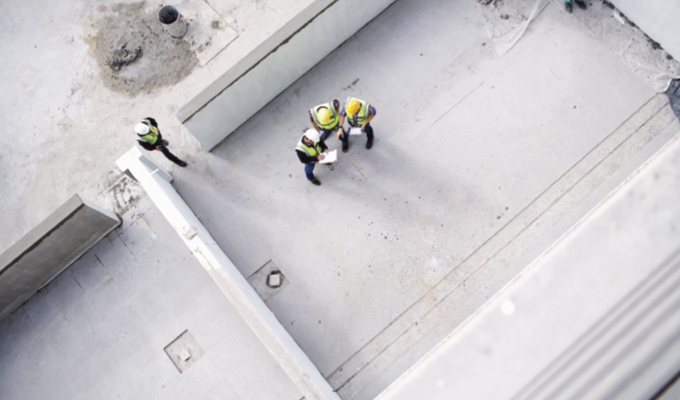Several years ago, we were the general contractor on a 70,000-square-foot concrete tilt-up office and manufacturing building for a major company. The project superintendent, concrete foreman, and I were on the jobsite discussing the job schedule and when the tenant was expecting to move in. The two project team leaders weren’t exactly sure what the exact move-in date was, nor the contract completion date, nor what the City required for a final inspection and certificate of occupancy, or what it took to get the utilities turned on. This was not a comforting thought, considering this project team was supposed to oversee the $5,000,000 project.
I questioned them about the required building and fire department inspections, planning department landscape review, the electrical utility company’s installation schedule for the transformer and meter, the phone-line install date to allow us to perform the fire alarm testing, and the security system completion. I remember there were a lot of blank stares and no firm answers to finishing the project completely.
POST THE DATES
Our company builds this project type often and typically calculates the cost and project requirements based on a 7- to 8-month total completion schedule from groundbreaking to move-in. Our contracts always specify the start and completion dates. In the first project meeting with our customers, these dates are confirmed and documented to avoid issues at the end of the project when people tend to forget what was said and committed eight months earlier.
I recommend the team post these critical dates in the minutes of every weekly customer meeting, and on the job office wall in bold letters for all to see. I suggest they post the start date; completion milestone target dates (including foundations, slab, exterior walls, roof structure, rough framing, drywall taping, floor coverings, final inspection, utilities on, and punch-list completion); and the final contract completion date. With these dates clearly posted and tracked, the team will stay focused on the tasks required to complete the job on time.
A project team without a clear knowledge of the contract completion date or an understanding of what’s required to make things happen is a disastrous predicament for a construction company. Finishing projects late means you’ll surely spend more than the budgeted costs for field labor, equipment, supervision, general conditions, temporary facilities, and utilities. In addition, your customer will be unhappy, and you likely end up in a dispute over delays and damages with your customer and subcontractors. And even more important, your customer will tell everyone that your company finished later than promised.
SPEND A LITTLE, MAKE A LOT
At our jobsite meeting, I next asked the project team leaders when they were planning on tilting or erecting the building exterior concrete wall panels. Erecting tilt-up wall panels is a critical path item when building warehouse buildings from the ground up. The team told me they had scheduled the 100-ton crane to erect panels in mid-November.
I was thinking: Three more months. That seems way too long and won’t leave enough time to finish the project and meet our contract completion date!
I asked them how they arrived at the mid-November lift date. They said they had all decided it was reasonable, doable, and makeable, in order to be ready for the crane. I asked if they had checked the construction contract, schedule, or budget estimate to see if mid-November would work or fit within the project goals or move-in dates. They hadn’t, and in fact, neither of them knew the contract completion date or the move-in requirements for the project. I was a little upset, to say the least.
Rather than fire them both on the spot, I decided to see if I could coach them to produce a better result for themselves, the company, and our customer. I asked if they could possibly move the date up a few weeks. They hesitated and shook their heads “no way” in protest.
So, I encouraged them to think about how they could move the job a little faster. They had no ideas.
I next offered them both a $2,000 incentive bonus if they erected all the walls by October 31st. Guess what happened? They both changed their tune in a hurry, agreed, promised, and guaranteed they could easily and would surely finish two weeks faster. Not a bad investment for me. A $4,000 investment versus our 15-man crew working for two weeks longer than expected ($44,000 minimum savings). The end of the story is they tilted-up the walls on October 26th. I gave both the superintendent and foreman $2,000 each plus every crew member $250 for their extra efforts.
OFFER MORE TO GET MORE
What games, bonuses, and incentives can you offer to entice your crews to work faster and boost your bottom-line? Faster jobs equal more money in your pocket. Try different incentives like competitions between crews, games to beat the budget, challenges to finish ahead of schedule, hardware store coupons for no defect or punch-list items, catered barbequed jobsite lunches for meeting milestones, dinner gift cards for crews who hit important targets, winter jackets for no jobsite accidents, or anything else that will keep work fun, exciting, interesting, and competitive.
Take time to teach your people how difficult it is to make a profit. Explain that these bottom-line boosters make a big difference. Your job is to focus on positive factors you can use to influence your team to perform the best they can. Determine what tips and tricks you can use to achieve your goals, post the schedule completion dates for all to see, and offer some incentives to beat the schedule.
About the Author
George Hedley CPBC is a certified professional construction business coach and speaker. He helps contractors build better businesses, grow, profit, improve estimating and field production, and get their companies to work. He is the best-selling author of Get Your Construction Business To Always Make A Profit! available at Amazon. For more, visit www.constructionbusinesscoaching.com or contact gh@hardhatbizcoach.com.


